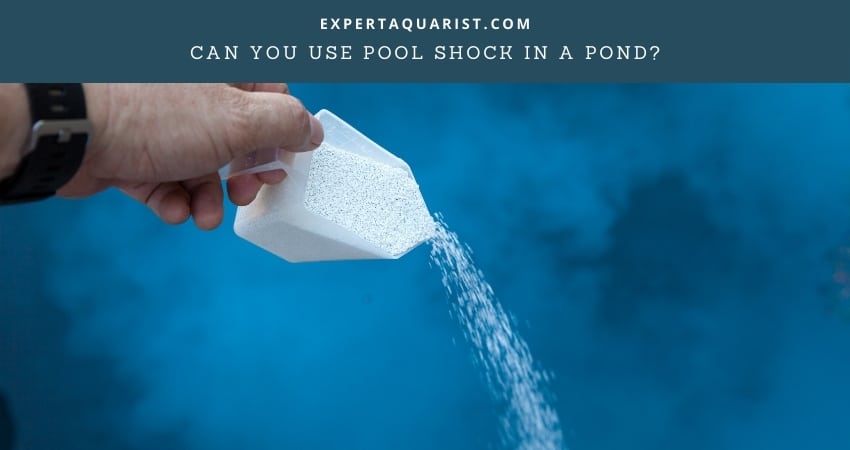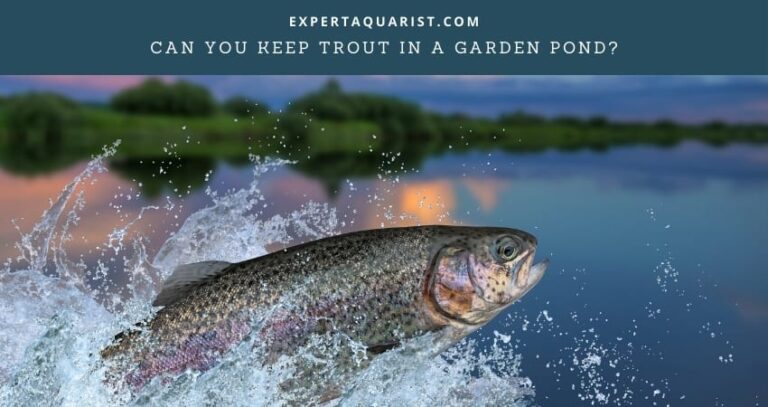Shocking a pool is basically a process where water is exposed to a certain amount of chlorine to kill every living being in a pool like all bacterial colonies, algae, and chloramines.
But, there’s a big difference between a pool and a pond. And in response to the common question, “Can you use pool shock in a pond?”, I would say, “Yes, you can!”. But it may cause serious harm to your pond ecosystem if you use it too much. So, be Careful.
Even though you might come across different methods on the internet about how to use pool shock in a pond, the reality of the fact is, it is too big a risk. And I am here to discuss why exactly you should avoid the idea of using a pool shock in a pond.
How can you use pool shock in a pond?
The first thing to decide is whether or not your pond needs a shock. If you see lots of algae, it may be time for one. Algae thrives on oxygen just like all other living things do but too much can cause problems by robbing everyone else’s oxygen supply.

Shocking gets rid of algae which will help restore clear waters that have been made murky with icky greenish stuff – plus desirable plants and animals live in ponds so we want them around forever more! Here’s how you do it:
1. Stop algae from growing
Dead plant and animal life can cause massive algae buildup, which is harmful to your pond. To keep your pond healthy you should remove all dead or decaying plant and animal life from the water’s surface at least once per season on average.
Algae feed off decay so if there are any left over they will have plenty of food for themselves.
2. Use Algaecide
Get some algaecide next. Use the instructions the manufacturers gave you as each algaecide is different. Add the correct mixture into your pond.
3. Let it it settle
Now you just have to wait until the algaecide settles. You should see some progress in 24 hours. If there’s no progress then you repeat the process again.
Chlorine should only be used as a last resort because they’re highly toxic to most life forms including us humans who need clean water sources themselves.
This is the easiest way to shock a pond by yourself. However, should you do it or not remains a separate story. A lot of pond owners don’t prefer doing this. We’ll talk about it down below.
Why you shouldn’t pool shock in a pond?
It is a proven fact that a concentrated level of chlorine kills every aquatic life form in a pond. Chlorine is a form of an oxidizer that causes stress and stress-related illness in pond fishes by removing their slime coat which is vital for their survival. Sadly, pool shocking often involves chlorine, putting your pond in jeopardy.
The amount of harm caused by using chlorine depends on many factors. Some have argued the validity of watching the level of chlorine in a pond and whether or not they harm the healthy environment of aquatic life in a pond.
Some even partially change water without using tap water to remove the chlorine. This practice can prove to be extremely harmful. Even if you might not notice any apparent harm it’s causing to your fishes it doesn’t mean that it isn’t harming them by stressing them.
It also harms the gill structure of the fishes giving them trouble to breathe. An organic chemical like phenol comes out of organic wastes and is very toxic to fish. If chlorine somehow combines with phenols, the environment in the pond could easily become even more toxic.
Not just phenol, it can also cause harm combining with some other organics forming trihalomethanes, a family of carcinogens.
When the pond is exposed to a high level of chlorine, fishes will get irritated. They start swimming erratically and attempt to leave the water.
And when it is exposed to a relatively lower level of chlorine, it might not be as life-threatening but still it causes a great deal of harm to the fish. They are likely to gasp and come out at the water surface to receive oxygen.
Some people try to use a low level of chlorine in the pond instead of shocking it all together. However, this could make your algae problem even worse as chlorine might combine with ammonia particles and form chloramines. So it would be better for you if you avoid chlorine completely.
This is the reason many fish pond owners opt out of it.
What do you do when chlorine damages your pond?
If you have already used chlorine in your pond and now suspect or already see the signs that it has started causing damage to the aquatic environment of your pond. There are a few things you can try and follow to minimize the damage as much as you can –
- Sodium thiosulfate can be used to neutralize chlorine. It is highly effective.
- Try using chemicals for water treatment, they are highly efficient in removing chlorine or chloramines from the water. Just make sure you are buying the right one according to your needs.
- Try to increase the aeration level of your pond as much as you can for a few days.
Alternative options to using a pool shock in a pond
The reason people think about shocking their pond is algae growth. Sometimes algae is easy to remove as you could even use your hands to clear up your pond. But some forms of algae are quite difficult to get rid of as they cover up your entire pond water and turn it green or even brown sometimes.
In addition to pool shocking, there are some other recommendable options you can try on your pond without harming the health of its aquatic lives:-
1) Algae control
You will find many algae control products available in the market nowadays. These are basically chemical products designed to clear your pond from algae. They are highly effective and generally take about 24 hours to clear up the whole pond.
However, while using them you must follow the instructions with utmost precision otherwise the consequence could be devastating. Easy-life Algexit, tetra algae control and api algaefix are some of the names I can mention.
2) Add more plants
If you don’t want to use any sort of chemical, you can just add more plants in your pond. This will shade algae from sun and moisture and also deprive it of nutrients it feeds upon. All of which are necessary for algae to grow. So, this is one of the most natural ways to keep your pond clean.
3) Use high-quality fish food
When you use higher quality fish food, your fish will digest more. Resulting in fewer nutrients for algae to feed on.
4) Ultraviolet clarifier
These devices will effectively kill algae in your pond by filtering the water with UV light. Though they are effective, they will cost you around one hundred dollars.
To summarize
You might come across different methods or techniques on how you can use pool shock or chlorine in your pond, but my understanding of it is that even if you can do it safely the whole process is just too hectic.
And there remains always that risk of making a slight mistake and ending up devastatingly harming or even killing every living being in your pond. So clearly, it is not worth the risk, especially when there are safer alternatives.






